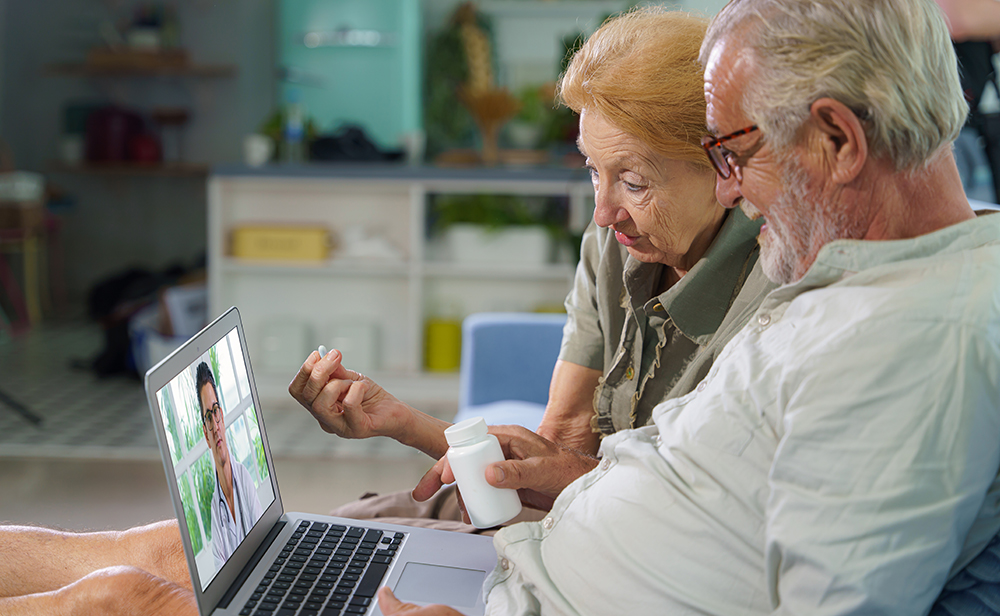
Telehealth has moved from being an occasional convenience to an essential part of modern healthcare. Whether you’re managing a chronic condition, checking in with your doctor, or seeking urgent advice, virtual visits are now a standard option. But just like in-person care, the quality of a telehealth appointment depends on preparation and communication.
Below, we’ll explore telehealth tips for patients that go beyond the obvious. These include expert advice, practical setup strategies, and rarely discussed insights—like how to manage sensitive discussions or what to do if your provider seems rushed.
Why Telehealth Preparation Matters
Telehealth services are designed to save time, reduce travel, and improve access to care. Yet many patients leave virtual visits feeling that they didn’t get all their questions answered. Unlike in-person visits, you don’t have a nurse checking vitals or a chance to casually mention a symptom while walking to the exam room.
That’s why preparation is crucial. The more intentional you are before logging in, the more effective your telehealth appointment will be.
Telehealth Tips for Patients: Starting with the Basics
Before we get into overlooked strategies, let’s cover the essentials:
- Check your technology early. Test your microphone, camera, and internet connection at least 15 minutes before your appointment.
- Choose a quiet, private space. Privacy reduces distractions and makes it easier to share sensitive information.
- Have your records ready. Medications, recent test results, and symptom notes should be within reach.
These steps may sound simple, but they eliminate 80% of the frustrations patients report in surveys on virtual care [American Telemedicine Association].
Beyond the Basics: Rarely Shared Telehealth Tips
Here’s where most blogs stop—but patients often search for advice on the real challenges of telehealth. These tips address issues that can make or break your experience.
1. Treat the Visit Like a Limited-Time Window
Telehealth visits are often scheduled in 15–20-30 minute blocks. Doctors sometimes run behind. Write down your top three concerns before the call. If you only mention what’s bothering you in the last two minutes, it’s more likely to be rushed.
2. Bring a Symptom Timeline
Instead of saying “I’ve had headaches for a while,” write down when they started, how often they occur, and what makes them better or worse. A short timeline saves time and helps your provider make quicker, more accurate decisions.
3. Don’t Hesitate to Repeat Yourself
Virtual calls sometimes create slight audio delays. If you feel your provider didn’t catch something, repeat it. Many patients hold back, but clarity matters more than politeness.
4. Prepare Your Environment Physically
If you’re discussing a rash, swelling, or injury, make sure you have good lighting. Consider using a flashlight or sitting by a window. Small details like this help providers make accurate visual assessments.
5. Ask About the Next Steps in Detail
This is a rarely mentioned but powerful tip: always end with “What should I watch for after this visit, and when should I reach out again?” This ensures continuity of care, especially for conditions that may worsen.
Telehealth Appointment Tips: What If Things Go Wrong?
Even with preparation, technical glitches or rushed interactions can happen. Here’s how to handle them:
- Technical failure mid-call? Ask your provider’s office in advance if there’s a backup phone number or platform.
- Does the doctor seem rushed? Politely say: “I want to make sure I cover one more important point before we finish.” This signals priority without sounding demanding.
- Confused after the call? Request a visit summary or message your provider through the patient portal.
These telehealth tips for patients may seem small, but they prevent miscommunication that can lead to missed diagnoses or medication errors.
Rare Insight: Telehealth and Sensitive Conversations
Patients sometimes ask: “Is telehealth appropriate for serious or sensitive issues?”
Here’s what most blogs don’t explain: sensitive discussions can actually be easier virtually because patients feel more comfortable speaking openly from home. Studies show higher disclosure rates in telehealth visits for topics like depression, anxiety, or sexual health.
That said, if you need a physical exam or lab work, telehealth is often the first step in a two-part process.
Key Telehealth Services That Work Best Online
Not every health concern is right for telehealth. Providers often recommend virtual visits for:
- Medication refills and chronic care check-ins
- Behavioral health and counseling
- Reviewing lab results or imaging follow-ups
- Minor infections (like pink eye or sinus issues)
- Lifestyle and wellness consultations
For emergencies such as chest pain, severe shortness of breath, or sudden vision loss, in-person or emergency care is always necessary.
Key Takeaways
- Preparation makes telehealth more effective—bring notes, check your setup, and prioritize concerns.
- Rarely discussed strategies, like symptom timelines and asking about next steps, improve outcomes.
- Telehealth services excel at follow-ups and chronic care, while in-person care remains essential for emergencies and full physical exams.
- Sensitive issues are often easier to discuss virtually, especially mental health.
Conclusion
Telehealth is more than a convenient alternative—it’s a life changer when used wisely. By applying these telehealth tips for patients, you can make every virtual appointment more productive, less stressful, and better aligned with your health needs.
Whether it’s preparing your questions, checking your setup, or knowing when to push for clarity, these small steps can transform your next telehealth visit into a meaningful part of your overall care.